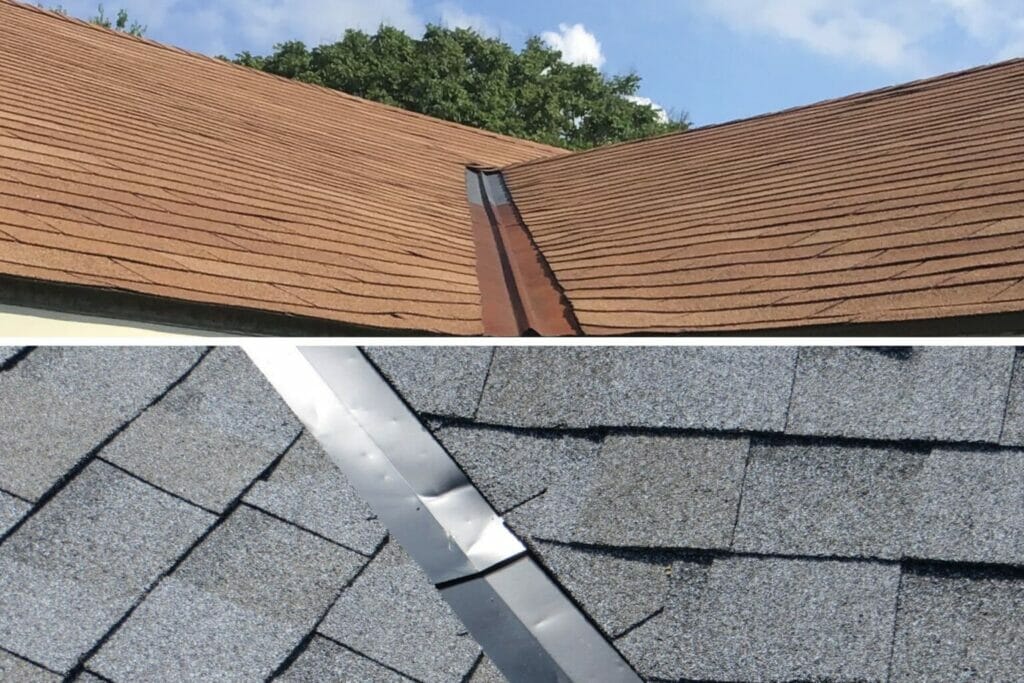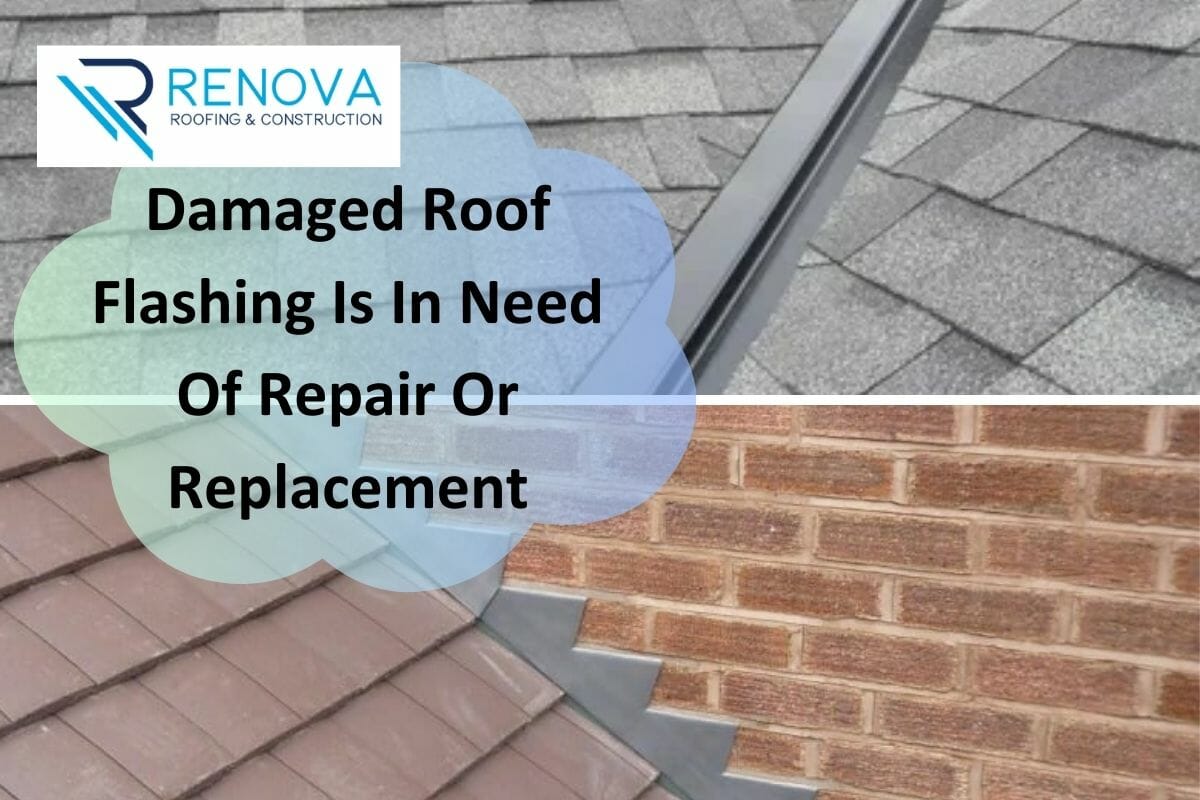Protecting your home from water damage and maintaining a sturdy roof relies on the condition of your roof flashing. Over time, roof flashing can deteriorate, compromising its effectiveness. Recognizing signs of damaged roof flashing is crucial to determine if repair or replacement is necessary. In this guide, we explore these signs so you can make the best decision based on your situation. Join us as we delve into the indicators of damaged roof flashing and provide expert insights to keep your home secure and comfortable.
👉 Signs Your Flashing is Damaged
The weather and time of year can affect the integrity of your roof’s flashing. Typically, the flashing is more durable than other roof features, but it will eventually show signs of wear and damage. It’s essential to regularly check your roof for any signs of flashing damage to prevent further damage. Here are some things to watch out for:
1. Corrosion and Rust
Corrosion can spread and develop holes in the flashing, allowing water to penetrate the roof deck. This is a common issue with steel and other metal roofs, but it can be fixed with a patch as long as the problem is isolated.
2. Missing Pieces
Wind and severe weather can cause pieces of flashing to break away from your roof. If you notice missing pieces, quickly assess the loss and get the pieces replaced as soon as possible.
3. Bends and Cracks
Bends and cracks in the flashing can cause the metal’s structure to weaken, which creates an opportunity for corrosion to occur.
4. Mold
Unfortunately, mold usually indicates that the flashing was installed incorrectly and needs to be replaced.
5. Internal Leaks
Any leaks inside your home near windows, fireplaces, or the attic may indicate that some of your roof flashing has been compromised.
👉 What to Consider When Replacing Roof Flashing
The process of replacing roof flashing requires careful consideration to ensure the right materials are chosen, and the installation is done correctly. As experienced residential roofing and building contractors, we understand the importance of selecting durable and suitable materials for your needs.
1. Types of Roof Flashing
When choosing a replacement material for roof flashing, several options are available. Common choices include metal flashing, such as aluminum, galvanized steel, or zinc, along with rubber or PVC. Each material has advantages and disadvantages, and it’s essential to weigh these factors before deciding. For instance, metal flashing is known for its durability but may be more expensive, while rubber-based products tend to be more budget-friendly, but may not last as long.
2. Durability Considerations
Another crucial factor in replacing roof flashing is considering the durability of the chosen material. It is important to select a material that can withstand harsh weather conditions and is installed correctly by experienced professionals. The selected material should withstand extreme temperatures, heavy rains, and other environmental factors without losing shape or cracking. Ensuring long-lasting durability is vital to avoid the need for frequent replacements.
3. Cost Considerations
The cost of the replacement material is also a significant consideration. While metal flashing may offer exceptional durability and weather resistance, it may not always be within budget. On the other hand, rubber-based products may be more affordable upfront but may lack certain benefits associated with metal, such as strength and durability. It is important to compare different materials and their price points to make an informed decision based on quality and cost-effectiveness.
4. Installation Difficulty
Lastly, the installation difficulty should be considered when selecting a replacement material for roof flashing. Metal flashing typically requires more skill and expertise for proper installation than other materials. Rubber-based products, while easier to install, may not offer the same level of protection as metal due to their lower durability rating. Considering the difficulty of installation ensures the replacement job is carried out correctly and safely.
By considering these factors, you can make an informed decision when replacing your roof flashing. Choosing the right materials and ensuring proper installation will help maintain the integrity of your roofing system for years to come.

👉 How to Maintain and Fix Roof Flashing
Most of the time, you can locate issues with flashing early enough to prevent further damage. As a good rule of thumb, check on the flashing at least once a year to ensure no holes, corrosion, or mold have occurred. Here are some things you can do to maintain or fix flashing before it becomes a bigger problem.
1. Securing Loose Flashing
If flashing is loose, beginning to pull away, or completely removed from the roof, it’s an easy fix. Simply unscrew your flashing and reinstall it onto the framing.
2. Covering Small Holes
If there are small holes in your flashing, cover the hole with a patch to prevent further damage. Cut some flashing slightly larger than the hole and secure it with roofing cement. We recommend contacting a roofing expert for repair services if there are multiple corroded holes.
3. Repairing a Leak
Fixing a leak can be done by applying roof cement or any sealant around the edges of the flashing.
While roof flashing is sometimes easy to repair, it’s important to know when to call a professional roofing contractor. If you don’t have the appropriate equipment, can’t get up to your roof safely, or the problem is advanced, it’s best to contact a trusted roofing expert immediately. They have the expertise to safely navigate your roof, identify problem areas, and make accurate repairs.
Is It Time for You to Schedule a Roof Flashing Repair?
Damaged roof flashing can lead to significant water damage, so it’s essential to check for warning signs regularly. Signs of flashing damage range from minor, hard-to-spot issues, to major gaps requiring significant repair. While it’s possible to maintain and fix roof flashing on your own, it’s important to know when to call a professional roofing contractor.
If you need a trusted roofing expert, look no further than Renova Roofing & Construction. They specialize in roof flashing repairs and replacements, and their team of experts can help get your roof back to tip-top shape. Contact them today at (601) 647-3433 to schedule a consultation.
FAQs
A. The lifespan of roof flashing can vary depending on various factors, such as the material used, climate conditions, and maintenance. On average, roof flashing can last between 15 to 30 years, but it is important to regularly inspect and maintain it to identify signs of damage early.
A. In some cases, temporary fixes like applying roof sealant or tape can temporarily mitigate further damage. However, following up with proper repair or replacement is essential to ensure long-term effectiveness.
A. Yes, damaged roof flashing can lead to various issues, such as water leaks, moisture intrusion, and potential structural damage. It is crucial to address damaged roof flashing promptly to prevent further complications.
A. Factors such as durability, compatibility with the roofing system, weather resistance, and cost should be considered when selecting a replacement material for roof flashing. Seeking guidance from a professional roofing contractor can assist you in making a well-informed decision tailored to your specific requirements.

